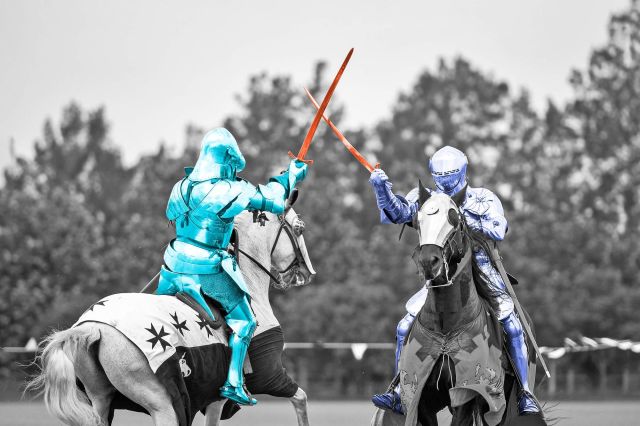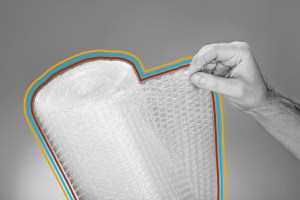
Chariot Racing
Dating back to at least 700 BCE, chariot racing was an athletic spectacle popular in both ancient Greek and Roman cultures. In Greece, the races were often held at arenas known as hippodromes, and in Rome, they were staged at the massive Circus Maximus, which featured a 2,000-foot-long track on which racers could reach speeds of up to 40 mph. Each chariot typically consisted of a two-wheeled cart pulled by a team of two or four horses, and the carts would make dangerous hairpin turns as they raced to the finish, which often resulted in catastrophic collisions. Chariot races were also a staple in the ancient Olympic Games and religious festivals of the time.

Naumachia (Naval Battle)
Another ancient Roman spectacle, naumachia were massive staged mock naval conflicts held in flooded amphitheaters. The competitions pitted two teams against one another and consisted of thousands of participants, both above deck and down below rowing the boats. The earliest recorded naumachia in 46 BCE was overseen by Julius Caesar, and featured the Egyptian and Tyrian fleets battling atop an artificial basin in Rome’s Campus Martius. More than 6,000 men took part in that event, though Emperor Augustus would later hold an even larger naumachia in 2 BCE that featured an additional thousand combatants. Naumachiae remained popular until around 250 CE, and even took place at the Colosseum.

Pankration
A combination of boxing and wrestling, the ancient Greek sport of pankration was introduced at the XXXIII Olympiad in 648 BCE. Simple fisticuffs (fist fights) had been a common competition (especially among Spartans) as far back as 688 BCE, but pankration also incorporated hitting, kicking, strangling, and grappling. Despite the intense physical nature of the sport, certain actions, like biting and gouging of the eyes, nose, or mouth, were explicitly forbidden. However, blows to the stomach and genital region were both permissible and encouraged to help competitors get the upper hand on their opponents. Greek mythology depicted figures such as Theseus and Hercules as some of the first participants in pankration competitions.
More Interesting Reads

Mesoamerican Ballgame
The Mesoamerican ballgame is considered the world’s first ball sport, a concept which spread to Europe after the Spanish arrival in the New World. The earliest evidence of the sport dates back to around 1400 BCE, which is the estimated age of a ballcourt that has been excavated in Guatemala. The game was widespread in the Americas, and scientists have since uncovered more than 1,500 similar ballcourts. The playing surface of these courts generally formed the shape of an uppercase “I,” with a narrow aisle in the middle and end zones at both extremes. Though the exact rules of this game are unknown and different Mesoamerican cultures played many variations of the game in different periods, historians believe that many shared a common goal of directing a rubber ball through a stone ring by any means necessary, using every body part available, from elbows to knees. These games also often held symbolic significance in Mesoamerican religions.

He’e Holua (Hawaiian Lava Sledding)
Though its exact origins have been lost to time, he’e holua, or lava sledding, was practiced in Hawaii long before the arrival of Europeans in 1778. Once popular amongst the Ali’i (Hawaiian ruling class), the sport involved competitors launching themselves down groomed slides along the side of a volcano while riding atop sledges (known as papa holua). These typically measured 12 feet long and a mere six inches wide. Racers would either stand atop the board, lie face first, or kneel down, reaching speeds up to 50 mph as they attempted to travel as far as possible. The last documented version of this event in its original form is from 1825. Historians believe that the sport was a way to honor Pele, the Hawaiian goddess of fire and volcanoes.

Purépecha Ball
Similar in many ways to field hockey, this Indigenous Mexican sport has one notable difference — the puck is on fire. The sport’s origins date back to pre-Hispanic times as far as 1500 BCE and its name, pelota purépecha, comes from the Purépecha peoples of the northwestern region of Michoacán. Murals located at the Palacio de Tepantitla in Teotihuacan, an archaeological complex northeast of Mexico City, depict the sport. The rules involve two teams of five or more players passing a flaming ball to each other with sticks similar to hockey sticks, with the goal of reaching the end zone. One notable benefit of lighting the ball ablaze is that it allowed the sport to be played at night. Though several amateur leagues in certain regions of Mexico have attempted to revitalize the sport, it has largely been lost to history.

Jousting
Though staged jousts remain a common sight at Renaissance fairs today, jousting was a legitimate sport in medieval times, when tournaments were staged for knights to display their combat skills from around the 13th to 16th centuries. Opposing knights were separated by a middle barrier (often called a tilt) and would ride on horseback towards one another decked out in heavy armor with their wooden lances extended. Whoever knocked his opponent off the horse would win, though the lance would often shatter upon impact. While competitive jousting began to wane in popularity by the 17th century, the sport continued in the form of a ring-tilt — an accuracy contest featuring knights using their lances to capture suspended rings.

Pedestrianism
Though far more recent than other sports on this list, pedestrianism — a form of competitive walking — gained widespread popularity in the United States as more people moved into cities after the Civil War. Filling an entertainment void for residents of these rapidly growing cities, the sport was simple yet captivating: Participants would compete in six-day-long walking competitions in arenas, walking several hundred miles over the course of competition. The events often featured intense wagering, live bands, and food vendors, and many professional pedestrians employed their own unique strides. A man named Edward Weston was renowned for his signature wobble, and another named Daniel O’Leary would pump his arms furiously while clutching corn cobs in each hand to absorb his sweat. It became such a spectacle that on September 21, 1879, 13 professional walkers gathered at Madison Square Garden in New York City to compete in front of 10,000 fans.












